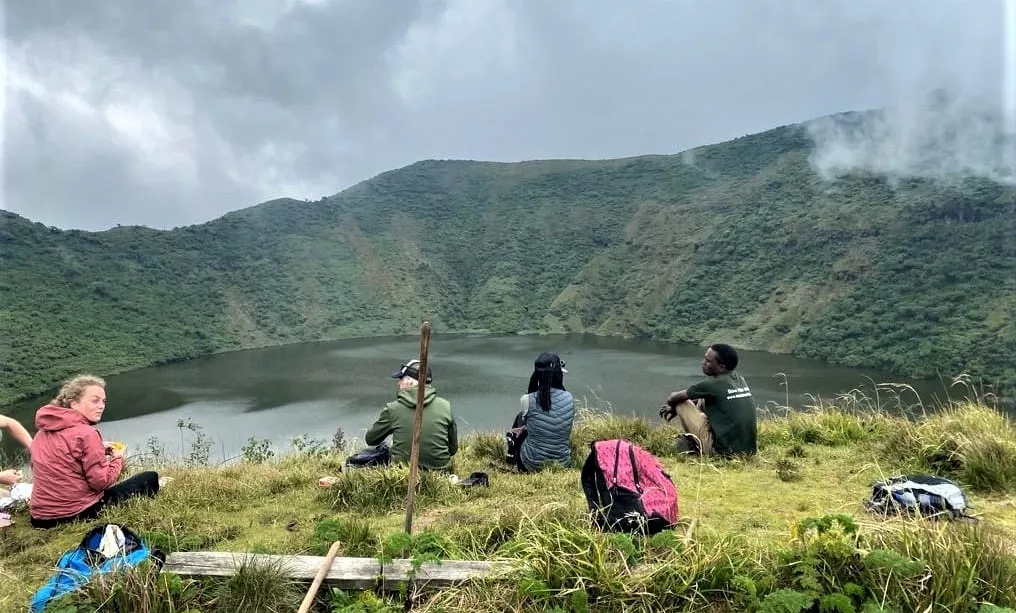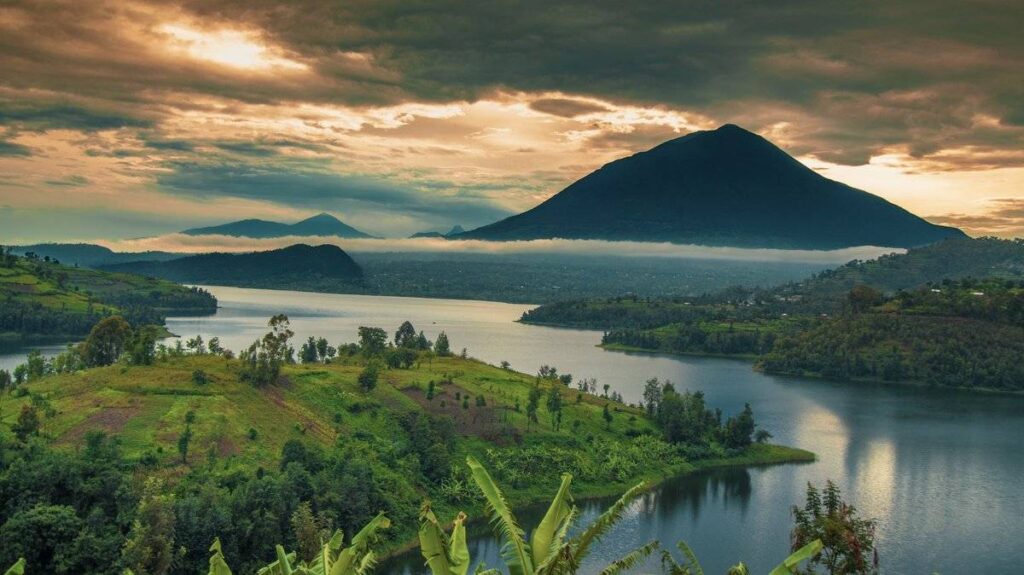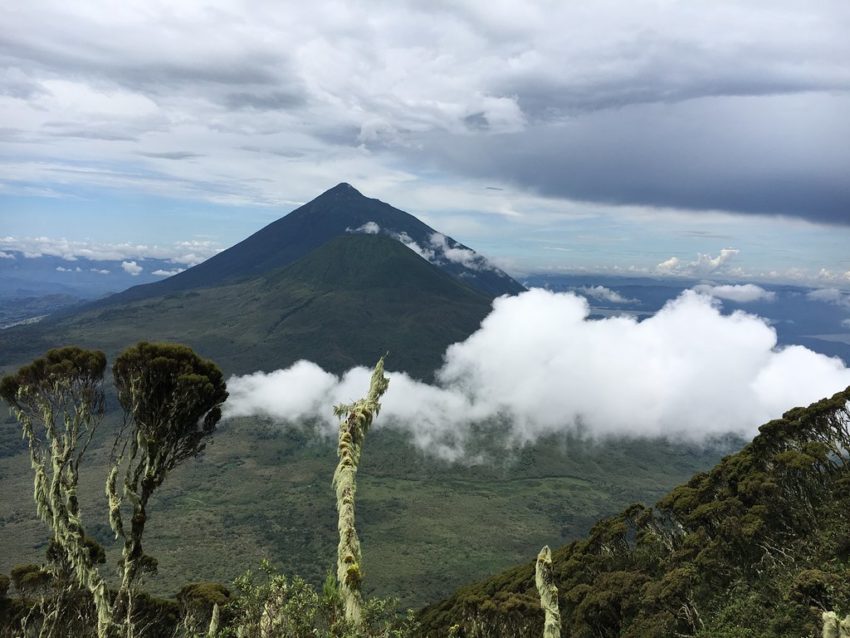The Volcano Mountains Of Rwanda
The Volcano Mountains Of Rwanda: Discover Some of East Africa’s Most Stunning Mountains in the Volcano Mountains of Rwanda, Some of East Africa’s most breathtaking mountains can be found in Rwanda. There are five volcanoes in the nation that provide amazing vistas and unusual experiences. All travelers wishing to experience Rwanda’s natural splendor should make time to visit these volcanoes, which provide hiking routes and hot springs. We shall examine each of Rwanda’s five volcanoes in this guide and give a brief synopsis of their features. Now let’s get going!
Some of East Africa’s most distinctive volcanoes may be found in Rwanda. These volcanoes are found in the Virunga Mountains and were created over millions of years by tectonic activity. The Rwandan volcanoes, which offer breathtaking scenery, an abundance of wildlife, and a means of subsistence for a large number of people, are an essential component of the nation’s ecological and cultural legacy. Because of their beauty and distinctiveness in comparison to other East African volcanoes, they have also grown in popularity as tourist destinations. This post will discuss the unique qualities of Rwanda’s volcanoes and the need to preserve them for future generations. Rwanda’s Volcano Mountains
Five of the most amazing volcanic mountains in the world are located in Rwanda. The Virunga Mountains of the nation are home to Mount Karisimbi, Mount Bisoke, Mount Muhabura, Mount Sabyinyo, and Mount Gahinga. Visitors can enjoy different experiences at each of these magnificent peaks, such as snow-capped summits, lush forests, and breath-taking views. We will examine each of these five volcanic mountains in more detail in this post so you can discover what makes them unique and what to expect when you travel to Rwanda.
The highest peak in Rwanda and the second-highest in Africa is Mount Karisimbi. At 4,897 meters (16,000 feet), this volcano’s top provides breathtaking views of the surroundings. From Kigali’s international airport, the climb to the summit can take up to two hours, but once at the top, travelers won’t be disappointed! Hiking around Mount Karisimbi’s flanks is an option, as is just taking in the summit’s vistas. Mount Karisimbi is home to numerous active volcanoes and is situated in the Virunga Massif, which lies at the eastern edge of Africa. The mountain’s peak is surrounded by two craters inundated with lava that are just waiting for your next adventure—or selfie—and is located in one of Rwanda‘s least accessible national parks.

At a height of more than 3,000 meters, Mount Bisoke is a volcano that provides breathtaking views of the surroundings. Volcanoes National Park, home to numerous active volcanoes, is home to Mount Bisoke, a dormant volcano. Experience the stunning vistas of two beautiful crater lakes, one near the peak and the other about midway through the trip, when you hike Mount Bisoke.

Mount Muhabura: If you have a strong interest in volcanoes, you should visit the summit of this mountain. One of Africa’s most active volcanoes, it continuously releases a plume of steam at the top. You’ll have an incredible view of Lake Mutanda’s vivid blue and the Rwandan Volcano Mountains from the crater rim.

The second-highest mountain in the park, Mount Sabyinyo, is a three-day trip that is unquestionably worthwhile. Throughout the hike, you will be treated to breathtaking panoramic views, with even better views on the day of the summit. If livestock owners don’t want to live off their animals, there are plenty of natural resources in the area, including game like elephant and leopard. There are also fertile agricultural places to consider.
Mount Gahinga: If you’re seeking to spend some time outdoors, Mount Gahinga is a stunning peak that is reachable from the adjacent village of Magonga. The Ruvu River in Tanzania is seen from Mount Gahinga; it shimmers in the sunlight. On a clear day, you may also get a breathtaking view of Lake Ruhondo.
Located in Central Africa, Rwanda is a small country that boasts some of the best hiking trails and activities surrounding the Rwandan Volcanoes. Rwanda has a range of activities for both hikers and adventurers, including mountain climbing and hikes up volcanoes. Rwanda offers something for everyone, whether you’re searching for a simple day hike or something more strenuous. To help you make the most of your time in Rwanda, we will examine some of the top hiking routes and activities near the Rwandan volcanoes in this post.
The Animals and Plants on the Volcanic Mountains of Rwanda
The montane forest, alpine meadows, and grasslands are among the diverse range of flora and animals found in the volcanic highlands of Rwanda. The lowland woods and savannahs to the south and east are naturally divided by the Rwandan mountains because of their geographic location. Numerous endemic species can be found in the area, including the national bird Bullock’s Eared Grebe (Podiceps nigricollis), which has successfully adapted to its harsh environment. Because of their position, these volcanoes are home to a remarkably wide array of fauna. For instance, three different species of monkeys are found in this area: the green mottled mangabey (Cercopithecus inustus), the blue-cheeked mangabey (Cercopithecus mitis), and the Rwandan epaulette (Cercopithecus pogonias). A vast range of birds, reptiles, and amphibians are also found, including the huge jumping spider of Rwanda (Salticus zanzibaricus).
Examining Customs and Local Culture in the Area of the Five Volcanic Mountains
Learning about the customs and culture around the five volcanic mountains is an excellent approach to become acquainted with the region’s past. You will gain an understanding of how people live and interact with their surroundings through this tour, which includes seeing historic ruins and participating in customary cultural activities. You will be able to enjoy the culture and customs of the area even more after visiting these locations because you will have a deeper understanding of them. Every volcanic mountain is distinctive and special due to its particular features, vegetation, and wildlife. Investigating these volcanoes is a fascinating chance to learn about regional customs and culture in a fresh way.



